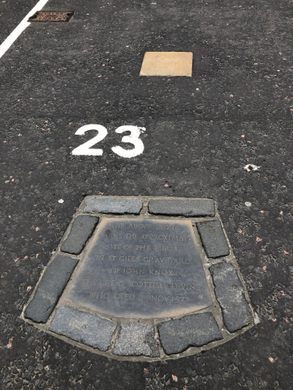#the reformation
Text
“twitter unverified the pope!” ok so henry viii did that just under 500 years ago ur not special x
26K notes
·
View notes
Text



The Reformation Defina Knit Dress, 2023
33 notes
·
View notes
Note
Why do alternate history authors always assume No Reformation = Middle Ages forever? No Reformation means no Counter-Reformation, i.e. decadent neoclassical popes and cardinals pouring money into arts and sciences.
I don't know, because that doesn't make sense even on its own terms. Surely No Reformation means Renaissance Forever...
Also, even without the Reformation, at some point some king is going to get into a fight with the Pope and manage to get Gallicanism or a revived Conciliarism over on the ultramontanists and make it stick. It's just the law of large numbers.
#alternate history#renaissance history#the reformation#gallicianism#apocrypals#theology#heresies#ish
23 notes
·
View notes
Text

Princess Beatrice || The Reformation
14 notes
·
View notes
Text
the first trailer for book one of CJ Sansom’s ‘shardlake’ series (Dissolution) is out and…
Is it just me or is this marketed as if it’s an action thriller? Down to the editing, the music, the fonts used. Which is frankly bizarre since it’s supposed to be a murder mystery. It’s set almost entirely in a monastery! It’s not a big sprawling epic…
youtube
#this was not at all the vibe I was expecting#I… don’t like it#not trying to say the show will be bad I am just not a fan of the way it’s framed here#hopefully that’s down to the promotion side of it and isn’t a reflection of the series in of itself#this style would be more suited for the last book at Mousehold#where there actually is a big battle at the end#and events of state are discussed more#but that’s not what the first book is#also I hope they don’t make London look really grey and dreary. it’d be nice to have a Tudor city that isn’t. like. drab#first look at sean bean as cromwell tho#he’s gonna be so dastardly. look at those smiles! positively nefarious#but Sean bean looks like he’s doing a good job#shardlake#thomas cromwell#historical drama#period drama#Shardlake series#dissolution#early modern#the reformation#cj sansom#the Tudors#Tudor#Tudor history#Tudor drama#the dissolution of the monasteries
7 notes
·
View notes
Text

The funeral of the leading Reformation preacher John Knox took place on November 26th 1572.
I was busy on Friday so missed a few posts, the main one being the death of John Knox on the 24th.
Surprisingly there is not any great detail of the occasion, but I suppose that is the way he probably would have liked it, the movement he headed decried anything ostentatious regarding religion. So I have dug deep looking for anything on it and found a few wee pieces.......
From Thomas M’Cree's the “Life of John Knox” (p. 277):
“On Wednesday, the 26th of November, he (knox) was interred in the church-yard of St. Giles. His funeral was attended by the newly-elected regent, Morton, by all the nobility who were in the city, and a great concourse of people.”
1. M. Hetherington in his History of the Church of Scotland on pg 77 continues the story of his burial when he wrote:
“When he (Knox) was lowered into the grave, and gazing thoughtfully into the open sepulcher, the regent emphatically pronounced his eulogium in these words, ‘There lies he who never feared the face of man.'”
Regent Morton knew himself the truthfulness of these final words as John Knox had reproved him to his face, with Hetherington calling the regent later on in his history “that bold bad man.” (p. 77)
Knox's grave lies in the car park to the south of what is commonly known as St. Giles Cathedral the number 23 painted on it, with a blank yellow stone at its head. Beside that yellow stone that can be found a small plaque enclosed in 9 bricks with the following message, “The above stone marks the approximate site of the burial in St. Giles graveyard of John Knox the great Scottish divine who died on 24 November 1572.”
Back then of course it wasn't a car park, the original smaller Kirk, like the vast majority of churches, had at that time a burial ground, who knows how many bodies lie under the car park, and indeed surrounding buildings, the place having been a place of worship for over 600 years before he was interred there.
10 notes
·
View notes
Text
Anticlerical is not a synonym for Protestant
Catherine Fletcher, The Beauty and The Terror: a New history of the Renaissance
9 notes
·
View notes
Text
«The Great Apostasy» was, in fact, a concept during the Reformation, but it was used by the Protestants to describe their perception of how the Church had turned away from (apostatized from) the Original Christianity by integrating Graeco-Roman mythology and practices into its theology.
13 notes
·
View notes
Text
23rd February
There Is No Frigate Like a Book by Emily Dickinson
On this day in 1455, the so-called ‘Gutenberg Bible’ was printed. In the first example of mass production of a book, 180 “copies” of the original Bible were printed by Johannes Gutenberg, inventor of the printing press. The arrival of large scale printing of the written word was to change the world. Dickinson’s poem extols the power of literature to transport the reader into a different reality.

Sources: Ann Ronan Pictures/ GettyImages/ www.history.com
There Is No Frigate Like a Book
There is no Frigate like a Book
To take us Lands away;
Nor any Coursers like a Page
Of prancing Poetry -
This Travel may the poorest take
Without offence of Toll -
How frugal is the Chariot
That bears the Human soul.
The availability of the Bible - in the vernacular of spoken living languages rather than in the Latin of the Church - put the Word of God potentially in the hands of every lay Christian. The need for the intercession of the priesthood began to be questioned by religious dissenters and the seeds of the Reformation were sown.
6 notes
·
View notes
Text



The Reformation River boots, 2023
22 notes
·
View notes
Note
Don't know much about papal history so was wondering "What if" at 1550 papal conclave Englishman and cousin to the Tudors Reginald Pole had won which in real life he nearly did? He seems to be not completely fairly viewed as conservative because he opposed the Act of Supremacy and his own life outside of the Tudors gets overshadowed.
I don't particularly know much about Reginald de la Pole's intra-Catholic religious politics (where did he stand on the Counter-Reformation? Was he an arch-traditionalist or more of an Erasmian reformer?) but I think he's generally viewed as someone with strong Catholic beliefs, given his position on the King's Great Matter let alone the Act of Supremacy.

To be honest, I think the main impact of de la Pole being elected Pope would be the rapid acceleration and intensification of English Anti-Catholicism.
If the Bishop of Rome is not merely attempting to assert a foreign jurisdiction in England, but is a Yorkist Pretender to the throne seeking to bring down England's Josiah, things are going to get very dicey very suddenly because now being an open Catholic or having Catholic sympathies is going to be seen as high treason pure and simple. In this timeline, exclusion from the succession is not going to be enough for Mary, and she will probably go down in history as a willing martyr for the True Religion.
With Queen Jane I and King John II jure uxoris leading the charge after Edward's death, there will be no room for the more Catholic-friendly elements of the Elizabethan religious settlement - England is going to go full Calvinist along with Scotland, the Netherlands, and the Huguenots. In fact, England is going to get stuck into the French Wars of Religion and try to detach as much of coastal France as it can in the name of Reformed Religion.
18 notes
·
View notes
Text

Flora Vesterberg || The Reformation
6 notes
·
View notes
Link
14 notes
·
View notes
Photo

Who: Anna Van Patten as Grace Byron
What: The Reformation Kaye Silk Dress in Coriander - $278.00
Where: 2x03 “Great Reputations”
#gossip girl#gg#gossip girl reboot#gossip girl fashion#anna van patten#grace byron#the reformation#dresses#season 2#2x03#gossip girl s2#gossip girl season 2#gossip girl 2x03#gg season 2#gg s2#gg 2x03
5 notes
·
View notes
Photo



The 19th of August 1646 saw the death of Alexander Henderson, the Scottish presbyterian cleric.
Alexander Henderson was a Scottish theologian, and an important ecclesiastical statesman of his period. He is considered the second founder of the Reformed Church in Scotland. He was one of the most eminent ministers of the Church of Scotland in the most important period of her history.
.Alexander was born in 1583, and studied at the University of St. Andrews He was then a supporter of episcopacy; he subsequently changed his views and became a zealous upholder of Presbyterianism. He opposed the adoption of the five Articles of Perth in 1618, and resisted the use of the Scottish Book of Common Prayer in 1637, you might remember that Jenny Geddes threw a stool at the Dean of the Cathedral when he attempted to begin a service in St Giles, beginning a riot.
Henderson drafted two very important documents, the National Covenant of 1638 with Johnstone of Warriston, and the Solemn League and Covenant of 1643. He preached in the Greyfriars church on 28 February 1638, when the National Covenant was signed, and presided as Moderator of the memorable General Assembly held at Glasgow in the following November.
On two subsequent occasions he was chosen Moderator of Assembly. He was Rector of Edinburgh University, and instituted a Professorship of Oriental Languages in that seat of learning. With a view to conciliate the Presbyterians, Charles I. appointed him his chaplain on his visit to Scotland in 1641. Henderson was entrusted with various important missions; he was one of the commissioners who represented the Scottish Church at the Assembly of Divines at Westminster, and he was honoured with several interviews by Charles I., when he endeavoured, though unsuccessfully, to bring the king over to Presbyterianism.
Alexander Henderson died at Edinburgh on this day 1646. At the Restoration the inscriptions on his tombstone were obliterated; they were restored after the “Glorious” Revolution.
The second pic is Statue of Alexander Henderson at Valley Cemetery in Stirling, the next pic is his grave in Greyfriars Kirkyard, Edinburgh.
Much more on Alexander Henderson can be found here http://www.reformedspokane.org/Doctrine_pages/Doctrine_Intro/Portraits%20of%20Faithful%20Saints/Portraits38.html
#Scotland#scottish#the reformation#the covenanters#covenanter#religious figure#religious history#the national covenant#history
3 notes
·
View notes
